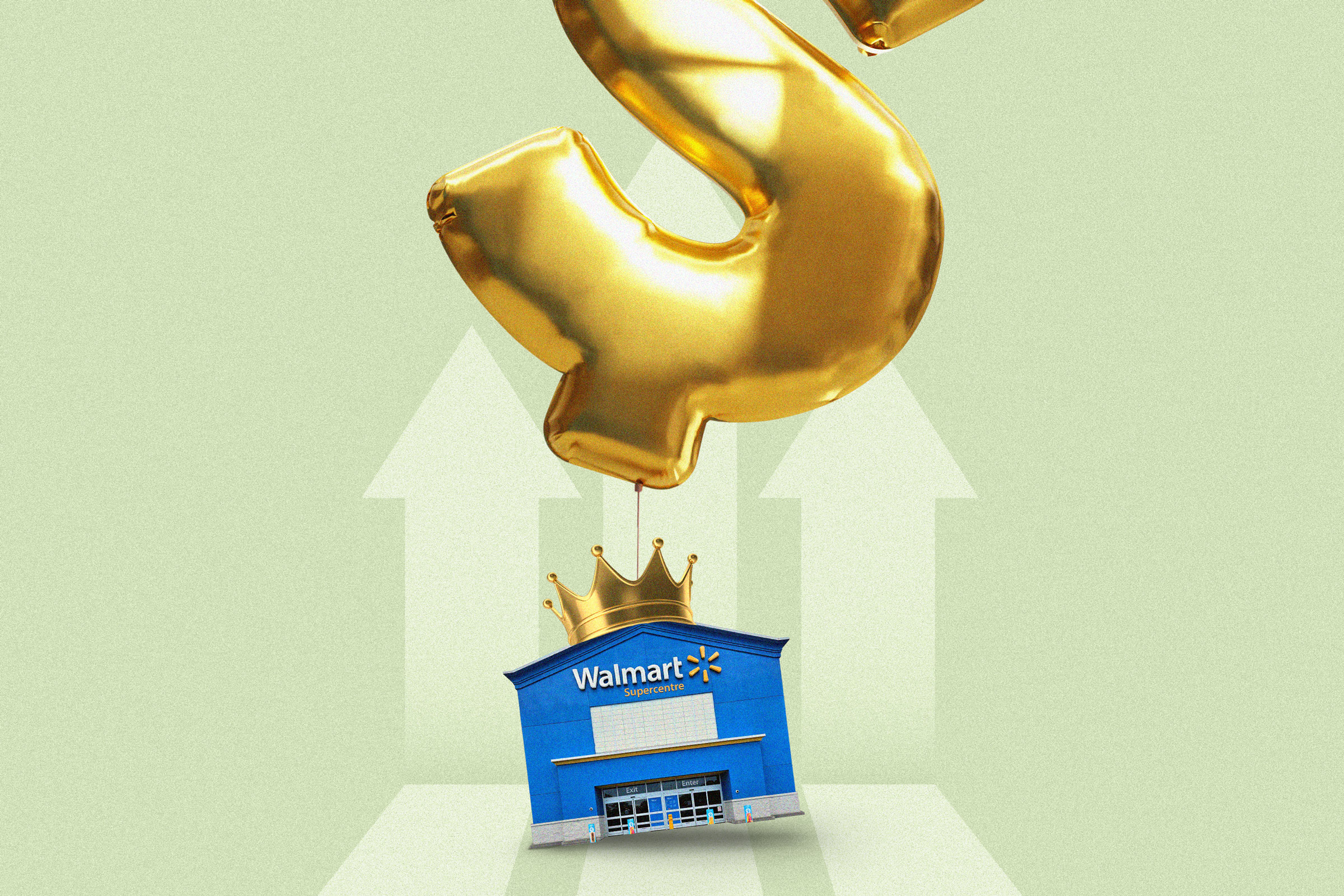In an economic climate of high inflation, Walmart has emerged as the retail victor, offering cheap goods to cost-conscious consumers. As millions of shoppers grapple with rising prices, the retail titan has managed to attract a wide range of customers, from low-income to high-net-worth households.
Since Walmart shares helped the Dow Jones Industrial Average march toward a record high of 40,000 on May 17, Wall Street has been delving into the company’s success story, concluding that its strong earnings have been supported by consumers hunting for bargains.
The retail titan’s shares have risen by 22 percent year to date and by 33 percent since last year, outperforming both the Dow Jones and the S&P 500. But why has Walmart become the darling of Wall Street while other retailers, such as Target, are flatlining?
It’s all in the numbers.
Walmart CEO Doug McMillon attributed the company’s excellent performance to unit sales, transaction counts, and market share gains, not to price increases.
In addition to generating more transactions, Walmart has been trimming the fat to keep costs down, such as reducing inventory levels by 4.2 percent.
During the pandemic-era supply chain crisis, retailers scrambled to buy as much as possible to satisfy consumer demand and prevent further trade disruptions. Now that supply chains have largely normalized, backroom stock does not need to be as immense.
Looking ahead, shoppers may notice lower store prices for various merchandise. The company noted that it has bolstered “rollbacks” on thousands of specific items in brick-and-mortar locations and on the website.

“Our rollback count is up and customers are responding to our price leadership,” Mr. McMillon said.
All of these trends helped the Arkansas-based retailer lift its market cap above $500 billion and bring the share price to roughly $65.
“Despite the broader economic pressures of inflation, Walmart has navigated the turbulent waters with aplomb,” said Giuseppe Sette, president of financial market research services firm Toggle AI, used by leading hedge funds and Wall Street banks.
“The broader implication here is clear: Walmart is not only a barometer for the retail sector but also for the U.S. economy at large.”
By comparison, Target has a market cap of about $67 billion, and its shares were up by just 3.2 percent year to date on May 29.

The Rich Visit Walmart
Since its inception, Walmart has been known as a discount department store behemoth that typically appeals to low- and middle-income shoppers.In today’s high cost-of-living climate, the retail giant confirmed that it is attracting more upper-income households.
“Wallets are still stretched,” Walmart Chief Financial Officer John David Rainey said in the earnings call.
While value had been the premier objective of visiting the retailer, the corporate giant noted that consumers are searching for quality and convenience, too.
This should not be surprising news, according to Carol Levenson, research director at Gimme Credit.
“It is the convenience as well as the value and assortment that attracts them, just as it does any shopper,” Ms. Levenson told The Epoch Times.
Walmart has been doing a lot to appeal to a wider range of customers, such as launching a new private-label grocery brand, upgrading more than 1,400 locations nationwide, and stocking shelves inside renovated stores with newer kitchen and fashion brands.
One area that invites more consumers of all demographics is the grocery aisles.

America’s Grocery King
Walmart is, by far, the largest grocery retailer in the United States. And amid soaring prices, an increasing number of Americans are flocking to Walmart for their grocery needs.Ms. Levenson noted that Walmart dominates because of its immense grocery and essentials base, which accounted for 72 percent of its U.S. sales last year. Its feet have been firmly planted at the top of the retail mountain because of “its geographic and assortment breadth, meaning it can sail through economic cycles and consumer spending trends, aided by its scale and its financial flexibility.”
“In grocery, it has recently introduced some higher quality private brands priced and positioned more like Trader Joe’s, likely aimed at upper-income households,” she said.
Consumers are shifting their spending habits, too, especially in the realm of food.
As fast food becomes more expensive, Walmart is attracting customers who are hunting for better deals. Grocery sales were up by mid-single-digit percentages, buoyed by meat and produce, the company reported in its recent earnings report.
The latest inflation report also shows a widening gap between food-at-home prices and food-away-from-home prices. In the April consumer price index report, for example, the former was up by 1.1 percent year-over-year, and the latter increased by more than 4 percent from the same time a year ago.
The reason is simple enough: Consumers are becoming more cautious and price-sensitive in their day-to-day spending amid elevated inflation.
“Clearly, everybody’s fighting for fewer consumers or consumers that are certainly visiting less frequently, and we’ve got to make sure we’ve got that street-fighting mentality to win,” McDonald’s Chief Financial Officer Ian Borden said on the company’s April 30 earnings call.
For now, their loss might be Walmart’s gain, and the retail juggernaut is attempting to build on the momentum.

Diversification Efforts
Since the pandemic, Walmart has been diversifying its revenue streams to pad profits.The company has invested more in its subscription-based membership program Walmart+. For example, in April, Walmart announced a sale exclusively for Walmart+ members, emulating Amazon Prime Day sales.
Walmart is also boosting its retail media network by installing more third-party advertisements across its stores, a relatively new sphere for the retailer.
These efforts have occurred in addition to its February announcement of acquiring smart television maker Vizio in a $2.3 billion deal.
This was a part of the company’s broader strategy to enhance its Walmart Connect media segment and compete with Amazon’s ad business, Grit Capital noted.
“With Vizio’s 18 million active SmartCast accounts, Walmart expects to broaden its advertising reach and innovate in TV and home entertainment,” Grit Capital said in a report.
Ultimately, these efforts are signals of a “robust forward-looking strategy,” according to Mr. Sette.
“The retailer is strategically diversifying its revenue streams,” he said. “The success of newer initiatives, such as its advertising business and Walmart+ membership program, contributed to a 24 percent growth in global advertising.”

Low-Income Consumers ‘Getting Crushed’
Corporate America has noticed how much inflation has gutted consumers. Some of the nation’s biggest companies are beginning to notice the price pressures being inflicted on low-income patrons, prompting these entities to start trimming prices to remain competitive.This made the quarterly earnings report “very insightful” for Nancy Tengler, CEO of Laffer Tengler Investments.
As upper-income households drove a significant chunk of the positive results, the figures highlighted how much inflation has hurt low-income households, she said.
Indeed, persistent inflation and concerns about broader economic trends have weighed on consumer sentiment.
“This tells you all you need to know about the lower-income cohort who always gets crushed by inflation,” Ms. Tengler said in a research note.
“High interest rates are finally having the desired effect, just not on the right group. Large companies with fortress balance sheets are benefiting. High-income investors are benefiting. The lower-income cohort is getting crushed, as they always do.”















